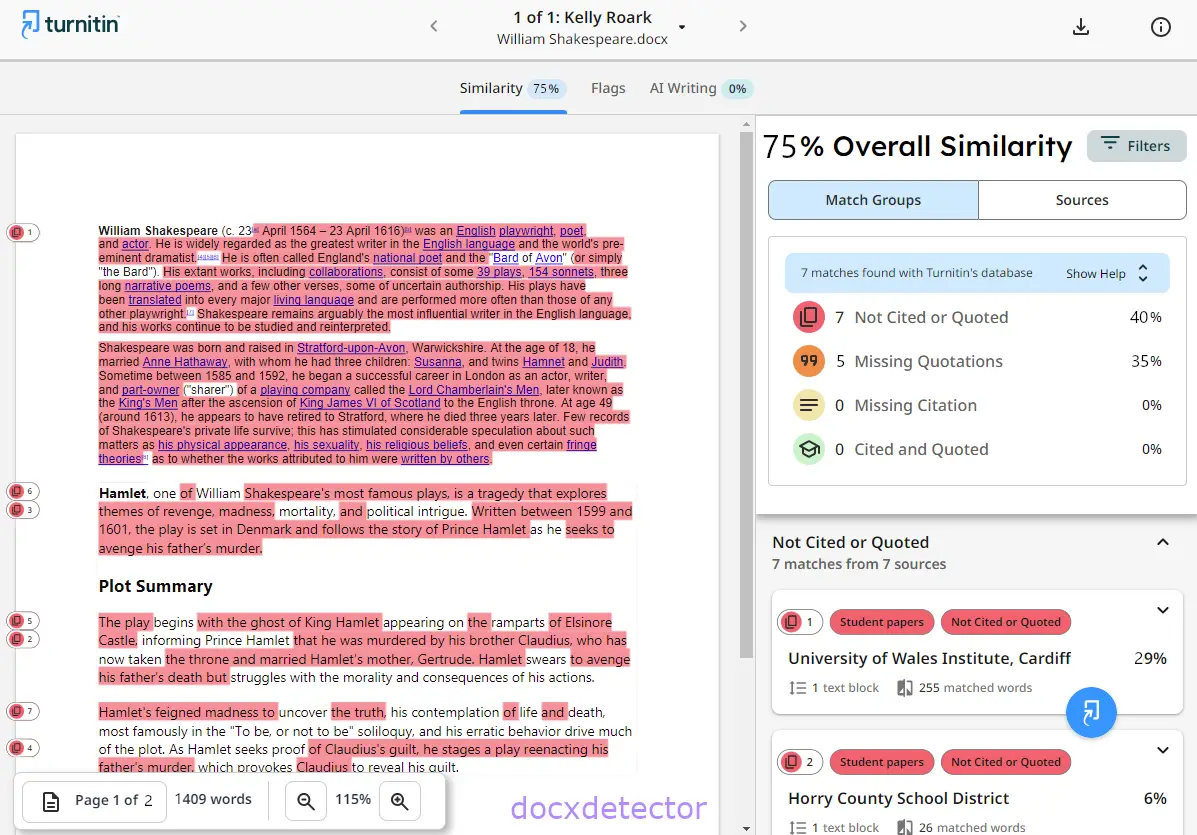The Ultimate Guide to Turnitin Plagiarism & AI Detection in 2025

In the world of academia, the name "Turnitin" can spark both reassurance and anxiety. For institutions, it's a vital tool for upholding academic integrity. For students, it's the final gateway every paper must pass. But with the rise of AI writing tools, understanding what constitutes Turnitin plagiarism has become more complex than ever.
This guide for 2025 breaks down exactly how Turnitin works, its latest AI detection capabilities, and how you can navigate the submission process with confidence and integrity.
What is Turnitin and How Does It Detect Plagiarism?
Turnitin is not just a simple text-matching tool; it's a comprehensive plagiarism detection service used by over 15,000 institutions worldwide. When you submit a paper, Turnitin cross-references it against an immense and constantly growing database, which includes:
Over 91 billion indexed web pages
More than 839 million student papers previously submitted
Over 176 million articles from academic journals and publications
The system then generates a Similarity Report, which highlights text that matches sources in its database. This is represented by a "similarity index" or "plagiarism score"—a percentage indicating the amount of non-original content.
Key takeaway: A high score doesn't automatically equal plagiarism. The report is a tool for instructors to identify potential issues. Properly cited quotes, common phrases, and your bibliography can all contribute to the score, and instructors are trained to interpret this context.

Turnitin vs. AI: How Turnitin Detects ChatGPT and Paraphrasing Tools
The game changed with generative AI. In response, Turnitin launched its powerful AI writing detection feature. This technology doesn't just look for copied text; it analyzes linguistic patterns, sentence structure, and word choice to determine the probability that the content was written by AI.
The technology took a major leap forward on July 16, 2024, with the introduction of AI Paraphrasing Detection (AIP). This update specifically targets content that has been rewritten by AI "humanizers" or sophisticated paraphrasing tools designed to evade detection. Even if you heavily edit an AI-generated draft, Turnitin's refined algorithms can often identify its synthetic origins.
Important Updates for 2025:
The system now analyzes documents up to 30,000 words for AI content, a significant increase from previous limits.
Turnitin is transparent about its limitations. AI detection scores between 1%–19% are marked with an asterisk (*) to signal a lower level of confidence.
Crucially, institutions are advised not to treat an AI score as definitive proof of misconduct but as a flag for further investigation.

Why Your Turnitin Similarity Score Matters More Than Ever
The pressure to succeed can lead students to make poor choices. Recent data paints a clear picture of the challenge:
A 2025 survey from the International Center for Academic Integrity revealed that a staggering 95% of students admitted to some form of cheating, including plagiarism.
Another study found that 85% of students believe plagiarism can help them achieve better grades.
Educators are responding. Today, 68% of instructors utilize AI detection tools, and disciplinary actions for academic dishonesty have surged from 48% to 64% in a single academic year. The consequences are severe, ranging from a failing grade to expulsion. More importantly, plagiarism defeats the purpose of education: to develop your own critical thinking and a unique academic voice.
How to Reduce Your Turnitin Similarity Score Ethically in 2025
A high similarity score is a red flag that needs your attention. The goal isn't to chase a 0% score (which is nearly impossible) but to ensure your work is honest and well-documented. Here are ethical, proven strategies to lower your score:
Master Proper Citation: Whether you use APA, MLA, or Chicago style, be consistent. Every idea that isn't yours needs an in-text citation and a full entry in your reference list.
Use Quotation Marks Correctly: For direct quotes, always use quotation marks. Even with a citation, unquoted text will be flagged as a direct match.
Paraphrase, Don't Patchwrite: Effective paraphrasing is more than just swapping out a few words. Read the source, understand its core meaning, and then rewrite it entirely in your own words and sentence structure.
Avoid "Quote Stuffing": Overusing direct quotes, even when cited, can suggest a lack of original analysis and will inflate your similarity score. Use quotes for impact, not as a crutch.
How to Check Your Turnitin Score Before Submission: A Smart Strategy
Anxiety often comes from the unknown. What if you could see your Similarity Report before you officially submit your paper? This is where a pre-check becomes an invaluable tool.
Using an independent, Turnitin-compatible checking service allows you to review your work in a safe environment. These services generate a report that mirrors what your instructor will see, giving you a chance to identify accidental plagiarism, fix citation errors, and refine your paraphrasing.
Crucially, reputable services like DocxDetector process your document without adding it to Turnitin's global repository. This means your final submission to your university will be treated as a new, original document, preventing any risk of self-plagiarism. By taking this proactive step, you turn Turnitin from a source of stress into a tool for improvement.
Ready to submit with complete confidence?
👉 Get Your Free Turnitin Check at DocxDetector Today!